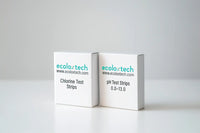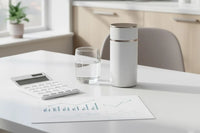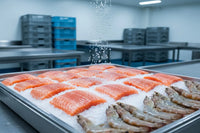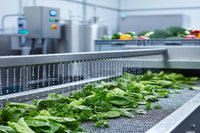Whether it’s seafood processing facilities, and the poultry industry, or beef, pork harvesting, and ready-to-eat (RTE) meat processing operations, there’s always the underlying fear of contaminants. From cutting blades and counter tops and freezers, to shelves and storage containers, Vibrio parahaemolyticus, Listeria monocytogenes, E. coli O157:H7, and Salmonella sp have been of particular concern. The meat industry has been especially focused on the risks that these bacteria pose for the sanitization of the overall meat processing environment. One of the most frequently asked questions however, in that context, is how to disinfect cutting boards and how generally to ensure the sanitization of meat and other meat-contact surfaces. Researchers have confirmed that Electrolyzed water (EW) – also known as hypochlorous acid (HOCI) – is an effective sanitizer for both meats and meat-contact surfaces.
Root Cause of Contamination
To understand how to sanitize meats and meat contact surfaces, it helps to understand how meats may face potential contamination throughout the supply chain. This life-cycle analysis will then help us understand how we can prevent contamination at critical junctures of the life cycle.
DURING PRODUCTION
The term “production”, in this context, refers to the rearing and raising processes associated with animals on a farm, ranch, pen, or other domesticated, captive or free-range bred animal habitat. Many otherwise healthy animals may ingest contaminated feed stock, such as grass or other foods and vegetables. The entry of pathogens, parasites and viruses into the animal digestive system may set the stage for a cycle of growth and nutrition of those microorganisms.
In addition to contaminants on its own flesh, animal fesses, urine, or other bodily fluids may contaminate tools, utensils, and surfaces nearby, such as counter tops and cutting boards. Knowing how to disinfect cutting boards and other animal contact surfaces in proximity of infected animals is, therefore, important.
Often, washing or hosing down the contact surfaces in a hypochlorous acid solution, and then, either allowing them to air dry, or thoroughly wiping them off with a sanitized wipe cloth is a good strategy to sanitize such items and surfaces.
DURING PROCESSING
Processing is a stage in the supply chain where animal meat, be it poultry, bacon or beef, is transformed into raw materials, semi-finished products, or ready to eat items. There are several stages in the processing cycle where meat and meat contact surfaces may get contaminated. For instance, we’ve discussed how animals may ingest contaminated foods, and thereby carry intestinal pathogens, including E. coli O157:H7, Cryptosporidium parvum, Campylobacter, and Salmonella.
During the slaughtering process intestinal contents and fluids, from a slaughtered animal, may transfer onto raw meats and other surfaces nearby. These pathogens might also find their way onto cutting blades, cutting boards, and other meat processing surfaces. These items and products are now a source of infection transference, and unless they are quickly and thoroughly neutralized, other products and items that come in contact with them may also get infected.
One way to sanitize meat and meat contact surfaces is to spray them with an HOCL solution. Items, such as cutting boards, chopping knives and blades, and containers, may be soaked in a hypochlorous acid bath. Because HOCL is a chemical-free, food-safe sanitizer, there’s no risk of chemical transference onto the meats and surfaces it sanitizes. And because of that fact (i.e., it is food-safe), there’s no need to subsequently rinse the sanitized meats, utensils, or contact surfaces, in plain water.
DURING DISTRIBUTION
Processing often entails the use of surfaces and devices, such as cutting boards and blades, to skin, slice, chop, and dismember animal limbs and parts, in preparation to distribute the meat to other stages within the supply chain. It’s understandable, therefore, that the challenge for how to disinfect cutting boards is formidable during the processing stage. However, meat contact surfaces can also pose a contaminant threat during the distribution phase – when meat and associated products move from the processing plant (abattoir, slaughterhouse, butchery, stockyard, raw meat packing operation) to other locations, such as meat shops, groceries, cafeterias, delis and restaurants.
Clean meat may come into contact, on trucks, trailers, trains or air transportation, with contaminated surfaces during transportation and, thereby, pick up contaminants through that interaction. Conversely, infected meat might transfer its bacteria and pathogens onto otherwise clean surfaces while being transported and, in that process, make those surfaces ripe for transferring those contaminants onto meats (and other products) they subsequently come into contact with.
The best way to end this cycle of contamination is by ensuring all potential surfaces, with which meat might come into contact with, are regularly cleaned with an HOCL sanitizer, and thoroughly wiped and dried. This must be done prior to each distribution activity so that, even if contaminants are transferred onto the surfaces via contaminated meats, the surface itself doesn’t host bacterial agents to pass onto any meats that subsequently come into contact with them.
Building in-house Sanitization Capability
Humans typically contact severe intestinal illnesses when they ingest contaminated meats, or drink water polluted with bacteria, such as Cryptosporidium or Salmonella. However, the risk of illness is also high when individuals come into contact with contaminated meats or infected meat contact surfaces. Knowing how to disinfect cutting boards and other tools and surfaces, in meat production, processing, distribution environments, is critical to preventing such diseases from spreading.
Farms, ranches, abattoirs, supermarkets, slaughterhouses, hotels and restaurants, are key components of our food supply chain, and instrumental in food safety. Having an inhouse HOCL-making machine is a good strategy to producing high-quality, food-safe sanitizers, without the risk of running out of it when you most need it. It’s economical to produce, and you can generate hypochlorous acid (HOCI) in unlimited quantity with simple ingredients: table salt, water, and electricity.
The hypochlorous acid-making machines available today, have a compact design, and may be installed without elaborate construction or mechanical prefabrication requirements. They also use regular electricity – the same used to power other household or commercial equipment. Best of all, the sanitization techniques discussed above, at various stages of the meat products supply chain, are easy to implement. Foggers, sprayers, and other HOCI delivery devices may be used to sanitize cutting boards, knives, chopping blades, counter tops, freezers and storage shelves.





